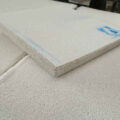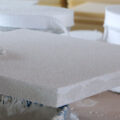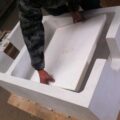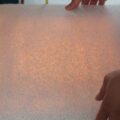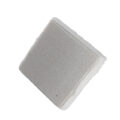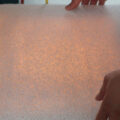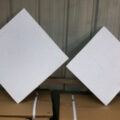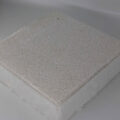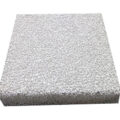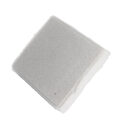Using a 20 PPI ceramic foam filter to filter and purify A356 alloy, by observing the changes in the tensile properties and elongation of the alloy before and after purification, the following conclusions can be drawn:
The filtration and purification of the 20ppi ceramic foam filter can improve the tensile strength and elongation of A356 alloy to a certain extent.
The 20 PPI ceramic foam filter can effectively remove the coarse inclusions in the alloy and make the inclusions dispersed in the alloy structure.
The 20 PPI ceramic foam filter has larger pores, which also increases the contact area between the melt and the air when purifying the melt, and the oxidation is intensified; when the melt flows, foreign inclusions may be introduced from the filter system, so the A356 alloy is filtered and purified, The performance of some samples has decreased.
In the range of 720 to 730 ℃, the mechanical properties of the alloy are not sensitive to the pouring temperature; in the range of 700 to 710 ℃, the temperature drop is enough to cause a substantial decrease in performance.

Ceramic foam filters are widely used in general aluminum castings. Ceramic foam filters have high porosity and large adsorption area, and have a better filtering effect on inclusions larger than 10 μm.
The purification mechanism of the ceramic filter system: interception and blocking are physical methods to filter out inclusions, which are effective for inclusion particles above 50μm, while small particles below 40μm need to be removed by adsorption mechanism. The inclusion is driven by the liquid flow to approach the wall of the filter. Because the two infiltrate and adhere to each other, usually the inclusion and the molten metal are not infiltrated, especially the smaller the particle size of the inclusion, the worse the wettability, once the inclusion and relative infiltration If the filter surface is in contact with the better performance, it is easy to break away from the molten metal and be absorbed by this surface.
If the pores of the filter are smaller, the filter channel is longer, and the flow rate is slow enough, the more likely it is that the inclusions in the molten metal will move to the inner wall of the filter, that is, the higher the efficiency of the inclusions being captured by the filter. The rectifying ability of the filter makes the molten metal, which originally has a strong turbulent flow, in a laminar flow state when flowing through the filter. After flowing through the filter, to restore the original turbulent state, a longer transition area is required. In this transition zone, the liquid flow has not yet developed into a stable turbulent state or is in a smaller turbulent flow zone, which avoids the secondary oxidation of the molten metal and the erosion of the mold, thereby playing an obvious slag blocking effect. That is why the metal mesh and the core filter also have a better metal purification effect.

